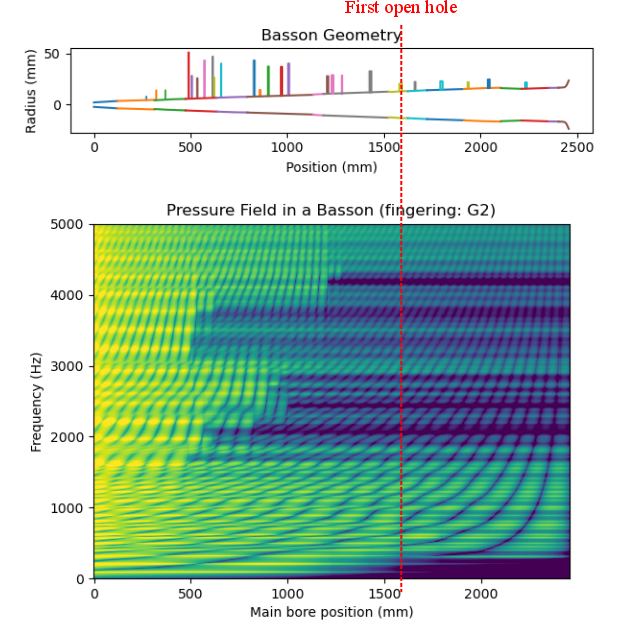
The bassoon is a woodwind instrument with side holes, and it is played with a double cane reed. Today, the French and German models coexist in the orchestra, with a predominance of the German model. They differ mainly by the number and the location of the holes and by the shape of the reed. The resulting timbre is slightly different, the sound of the French bassoon being often described as more “nasal” than the one of its German cousin. The aim of this work is to understand the relation between the geometric differences and the sound differences by comparing these two instruments through a series of measurements and simulations. The main part of this study as been carried out with Timo Grothe in the Erich Thienhaus Institute (ETI) in the “Hochscule für Musik” of Detmold in Germany.
To begin, the internal geometries of one bassoon of each type have been measured with split probes (main bore and side holes). Thanks to this knowledge, the acoustic response of these instruments have been computed with the software Openwind. The results of these simulations and in particular their input impedance for each fingering have been compared with acoustic measurement to validate both geometric measurements and the acoustic models. To compare their sound, the two instruments have been played by the same professional player and recorded with a high quality set-up from ETI. A second set of sound recording have been carried out with an artificial mouth designed by T. Grothe allowing the fine control and the measurement of all the “player’s parameters”. This knowledge has been used to compute the sound by using the temporal simulation of Openwind and compare the predicted and measured sounds.
The sound from the different measurement have been then processed to highlight the difference between the two instruments. This supposes to define specific sound descriptors. The simulations give us the possibility to vary independently each geometric parameters and observe which sound characteristic is modified. We developed phenomenological models acoustically informed to relate some geometric parameters (such has the chimney height of side holes) to the timbre signature.
